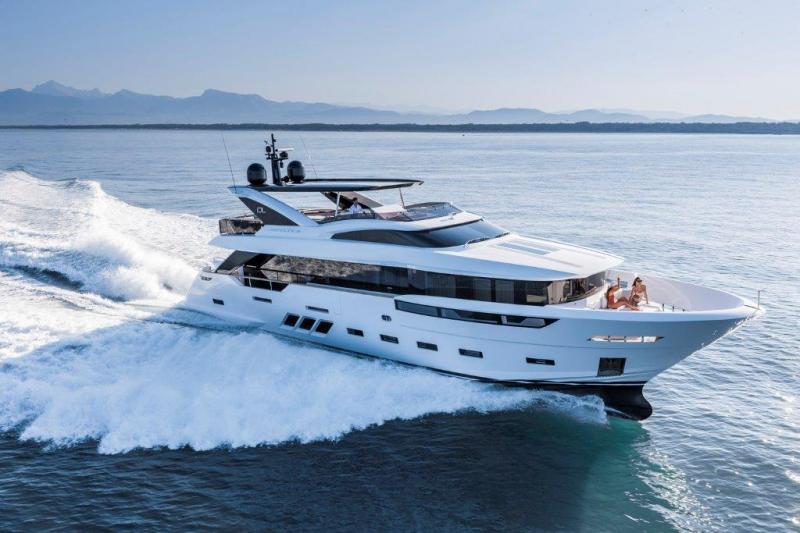Motor Yachts by Type of Hull or Displacement
2 December 2015




To have a better idea of which type of motor yacht would best suit your needs; your Allied Yachting broker can advise you on the various options available on the market for new construction or pre-owned vessels. In the meantime, here is a summarized guide to the different categories of motor yachts by type of hull or displacement, as they’re called in the Mediterranean:
MOTOR YACHTS BY TYPE OF HULL OR DISPLACEMENT
PLANING YACHTS
Designed to rise up and ride on top of the water, ideally operating at a speed that enables it to move across the tops of the waves. They usually operate best in the speed range of between 25 and 40 knots, depending upon the power output of the engines – they usually have two engines. At slow, “displacement” speeds (15 knots or less) they tend to be uncomfortable, especially in any rougher seas that force all boats to drive at slower speeds.
These boats are made to move you quickly from marina to marina to spend overnight; they are possibly the most popular yachts on the Mediterranean and certainly on the French Riviera. They’re also adapted for day trips to find those calm bays and anchor off by a quiet beach for a lunch and a swim or maybe a visit on land, using a small on-board dinghy.
Their bottoms are generally built V-shaped and are the fastest, but this advantage can be expressed on relatively flat waters, as their discomfort is significant while cruising through choppy waters. Deep V hulls, although less stable, show a much softer performance in rough seas.
DISPLACEMENT YACHTS
These are designed to glide through the water at slower speeds, moving the water sideways and down, out of the way. They are the most stable of boats and the most comfortable to be on, in moderate or rough seas. However, they travel relatively slowly at 10-12 knots cruising speed and they have a deeper draft. Because they generally have inboard engines with an external, protruding propeller, these are not boats that you can easily bring close to the Riviera’s beaches.
They are usually traditional in design and because they travel slowly, they are economic on fuel.
Generally, a single tank of fuel enables you to travel a long way. Built for overnight stays and even “Liveaboard” use, whether in a marina or at anchor, these boats are ideal for those who wish to travel distances and don’t mind how long it takes to get there.
Their flatter bottoms are not conducive to speed, but provide good flexibility in waves and high stability despite their tendency to roll. Most of these yachts are equipped with either fin or gyroscopic stabilizers. Some also carry a protruding bulb at the bow, just below the waterline. This bulb modifies the way the water flows around the hull, reducing drag and thus increasing speed, range, fuel efficiency, and stability.
SEMI-DISPLACEMENT YACHTS
These boats fall between the planing and displacement boats. Comfortable and stable, with fewer tendencies to roll, the semi displacement boat is intended to give you the best of both worlds. They are designed to operate at low speeds of 10-12 knots cruising and they are also capable of reaching maximum speeds of 18-25 knots.
Another benefit of this type of boat is that they are often designed for river use as well as for offshore. They have smaller drafts and tend to produce less wash than displacement boats and are just as comfortable at the slower speeds. Most of them will also carry stabilizer systems.
Please surf through our entire website listings of motor yachts by type of hull or displacement.





